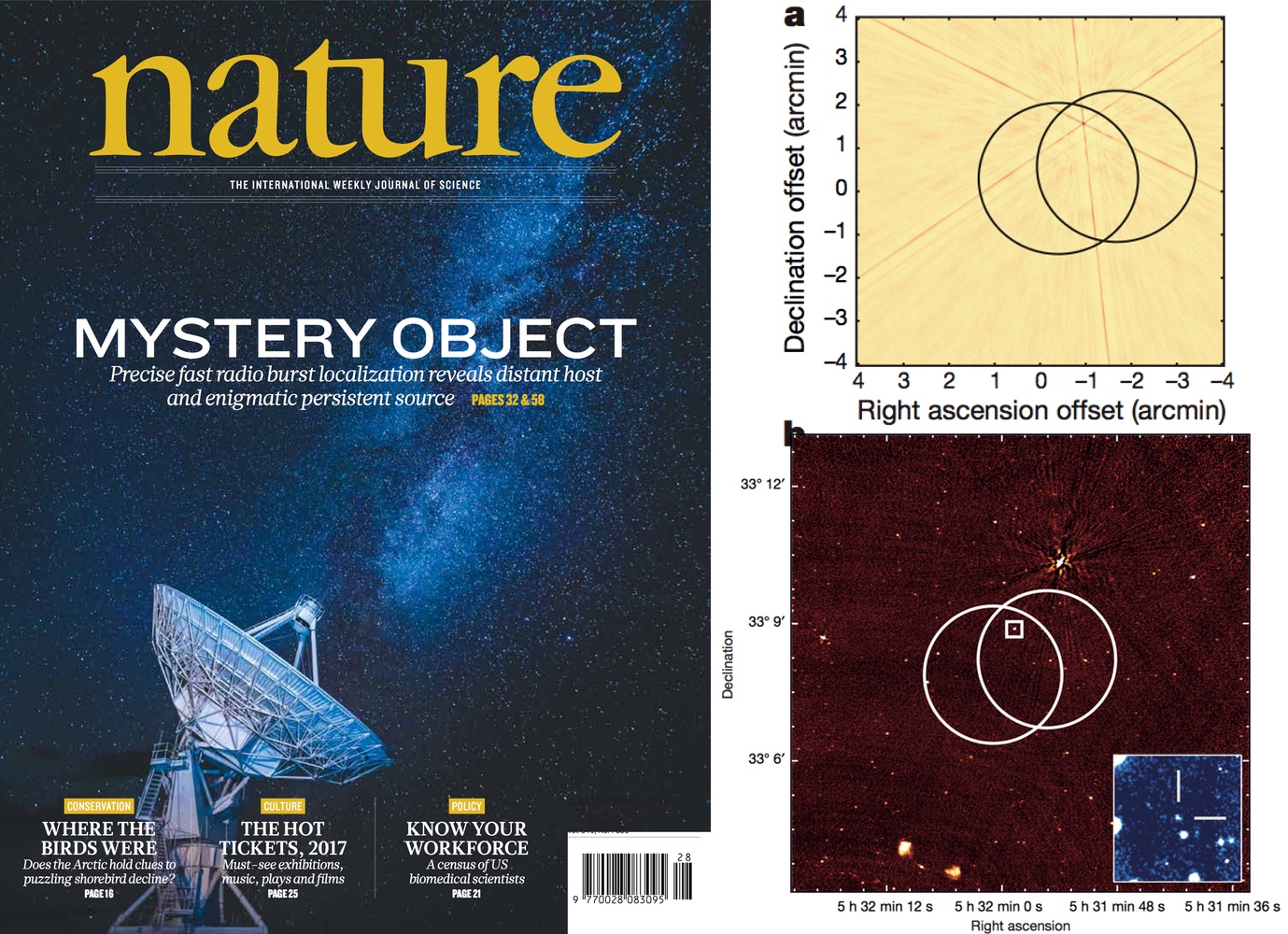Daily Image
30-01-2017A direct localization of a fast radio burst and its host
| Submitter: | Benito Marcote |
| Description: | Since the first discovery of a Fast Radio Burst (FRB) in 2007 many searches have been conducted to unveil their nature. While the observed dispersion mesures of these objects pointed to an extragalactic origin, we could not confirm this origin without the precise localization of these fast events. The discovery of a repeating FRB (FRB 121102) provided a unique opportunity to carry out interferometric radio observations of these bursts for an accurate localization. A team lead by Shami Chatterjee (Cornell), including ASTRON and JIVE collaborators, was able to detect several bursts with the Karl G. Jansky Very Large Array (VLA) and imaged them. They found a faint 180-microJy persistent radio source as well, within ~0.1 arcsec of the bursts. The spectrum of this source indicated a non-thermal emission process. VLBI observations using the EVN and the VLBA revealed that the persistent radio source is compact at milliarcsecond scales. A faint 25-mag optical counterpart has also been found with the Keck and Gemini telescopes, consistent with a star-forming galaxy. No infrared or X-ray counterparts have been found so far. For the first time, thanks to the precise localization, we have strong evidence for the extragalactic origin of (at least some of the) Fast Radio Bursts. These results were published in Chatterjee et al. (2017, Nature, 541, 58; https://arxiv.org/abs/1701.01098 ). The figure shows the Nature cover representing the localization. The top figure shows the bursts as seen by the VLA compared with the previous localizations done by the Arecibo Telescope (open circles). The bottom figure shows these positions over the continuum image, with the persistent radio and optical sources coincident with the bursts. |
| Copyright: | Benito Marcote |
| Tweet |  |
